
Cradle Games is a brand new studio, made from developers with 10-15, and sometimes 20, years of experience working on AAA games. It is comprised of veterans from Activision and Ubisoft, and currently, it is working on the incredible looking game Hellpoint, an action RPG with a startlingly distinct art style. Hellpoint is due out next year, and apart from its eye catching art, boasts an interesting premise (you’re on board a space station orbiting a black hole), some extremely interesting tech powering it, and is hitting every system on the market. It is also a game that is emphasizing 60fps and split screen multiplayer in a time few games bother doing so.
Given the past achievements of the people working on it, and the game’s eye on the future, as well as its emphasis on tech across the full spectrum of the industry, Cradle Games are uniquely suited to speak about the state of the gaming industry, where it is going, and where it might stumble. They are, of course, uniquely well suited to talking about the superlative looking Hellpoint as well. In this extensive chat that we had with Cradle Games’ Marc-André Jutras, we speak about Hellpoint, the tech powering it, the larger direction of the gaming industry, and more.
One of the things we wanted to talk to you about was tech—the tech powering your own game, of course, and also the larger trends of tech in the industry as a whole, and where you, as developers, feel we are headed.
One of the things I want to clarify is what we mean when we say the next generation of consoles may not do anything new. I think, let’s consider the cloud service by Microsoft. It’s something they are doing so that the processing is done online in the cloud and then streamed to your console. That’s not something that couldn’t be done on an Xbox One, it’s not new on a hardware basis. It can be done on the current console. And that’s the same thing with Sony, where you read about how the PS5 will support V-Sync, backwards compatibility, and something about texture streaming. And the current generation of PlayStation can already do this, it’s the choice of the developers to turn them on and off. Backwards compatibility, I am sure you remember, the first batch of PS3s could play PS1 and PS2 games out of the box. If anything, we lost the assumption that new generation hardware—it should be a no brainer for it to be backward compatible, it shouldn’t be a shiny new feature. And in the last gen, PS4 decided to just not do it.
Wouldn’t you say that’s down to the hardware switch from the Cell to the x86?
But when you go from the PS3 to PS4, you have ten times the processing power, and emulation of PS3 games, it should be quite easy. It’s not really a limitation, they just decided not to do it.
One thing we want to say is that when we look at the new hardware that’s coming out, we don’t see any—of course, it’s more powerful, and we will buy it because we are gamers and it’s new hardware, and games will come out for it. But we don’t see any hardware specific features that will change how games are made or what’s games are going to—like, it’s not like the switch from the SNES to PlayStation, not like 2D to 3D. Suddenly we had 3D games that didn’t exist before. There’s nothing that the next gen will offer that couldn’t be done before.
It’s basically the same thing, just done better.
Yeah. You want more power, more RAM, more VRAM, more MHz, more of everything we had before, we get it. The only thing we would like to see more developers do, which we are doing right now, is target 60fps. We know that big developers like Assassin’s Creed won’t do 60fps, because the more visuals they can pack in the game, the easier it is to promote and market it. If it looks better, they can sell more.
Yeah, you can’t make a screenshot on the back of the box out of 60fps.
Yeah, so as long as they target 30fps, they are fine with it. But one thing we would like to see more on the new generation of consoles is more people bringing back split screen. Because if you have more power, you can more easily do splitscreen. And we have those big 4KTVs, and splitscreen is dead, which is weird, because you could pack four 1080p TVs on a 4K screen.
Let’s switch to Hellpoint for a bit. I wanted to ask you about the engine you are using. Is this proprietary, or are you using Unreal, Unity…?
One thing we really like is when people ask what the game is running on because they can’t figure it out. We are running on a custom framework on top of Unity. We picked Unity—one of the advantages of Unity is that you can pretty much remove anything you don’t like. So, we’re using Unity because it makes it very easy to compile on pretty much every console on there, you just tick a checkbox, and you can compile for PlayStation or Xbox. Which is really important for us, to switch from one console to another really quickly.
Anyway, look at lighting, shadows, pathfinding, level of details, cameras, pretty much everything else that Unity offers, we decided not to use and make our own stuff.
So what can you tell us about that lighting and reflection and, how is it different from Unity?
To give an example, in our game, the space station is orbiting the black hole at all times. So there is a camera that is handling the skybox independently. So you have, when the player is playing, there are at least four cameras-one for the skybox, one for the player, one for the UI, and the final camera for the splitscreen. And what happens is that the skybox has its own unique, where true destination of the black hole and the lighting of the sky is separate. But when you end up at a part of the space station where you can see outside, we want the skybox to reflect properly and light up the scene properly. So if the sky is all red, you expect the world to look red. So on the normal reflection probe of Unity, you can’t see our custom sky. So we created our custom probe where the sky can be updated, and then have a separate reflection probe going on top of it.
From what I understand you said you are targeting 60fps for framerate. The general perception of Unity is that it struggles with framerate, which might be wrong, but that is a perception. So how are you sidestepping that, given that you use Unity as a base then add more of your own tech on top of that? Especially given this is also on Switch, which as hardware is already not that powerful relative to its peers?
That’s a bit of a bad rap that Unity gets, that it has a hard time getting to 60fps. For example, Hellpoint right now, on my home computer, with all settings on maximum, is running at 260fps on a 1070ti. Sure, that’s a new graphics card, but with all the settings cranked up to the maximum…
The idea that Unity has trouble with 60fps, I think it comes from how easy it is to make a game on Unity. You end up with a bunch of people who have no experience making games, making games, and then they struggle, because Unity lets you do pretty much anything. While if you go to make a game on Unreal, for example, the entry bar is higher, you need to have a lot more experience to make a game on Unreal Engine. Which means you need to know what you are doing. With Unity the bar is so low, you don’t need to know much about making games, and you can make one. And then you go around saying reaching 60fps is hard. Yes, but you don’t know why you’re not reaching 60fps.
In our case, in our team, we all have ten years of experience shipping AAA games for Ubisoft and Activision. For example, I have 14 years of experience, and I shipped two different Assassin’s Creed, two different Prince of Persias, two Rainbow Six. So when we open Unity, we know what to do, I am a programmer. So the first thing is, I always have the profile open, and I always know when the framerate is going down, and we don’t need to hunt to figure out what is creating the issue.
It’s not something to do at the end of a project, “oh we will optimize the framerate in the last two months of developing a game”. No, the whole time you make a game, you have to have your focus on keeping your framerate stable.
So the general idea people have is that you optimize near the end, but you’re saying you have to start optimizing from the get go.
Yeah. From the first work you do on the project, you have to check, “does it take too long to run?” For example, one of the Prince of Persia games we shipped was Forgotten Sands for the Wii, which no one knows about. It ran at 60 frames per second on Wii. It’s one of the highest rated versions of the game, it went under the radar. The moment it came out was as the same time as the movie, and there was a version for PS3 and xbox 360, and our version for the Wii which was different. Those three versions were sold as the same game, but the Wii one was totally different.
The version on the Wii had a different story, different mechanics, and was running at 60 frames per second. And we made sure it did.
I wanted to ask you about the art for Hellpoint, because it stands out. You look at the game’s screens, and you sort of know instantly what you are looking at. It’s a bit Lovecraft-ey. Sort of like Bloodborne. What exactly was your inspiration for the art style? What approach did you take to the visuals and art?
Yeah, we wanted to say as though Dark Souls, Dead Space, and DOOM had a baby. But the art style, it took us a long time to figure out what kind of art we were looking for. Because it’s easy to go with science fiction and stuff like that, but it’s not really that interesting, everyone does that. And in the end we found out a style that came out around the First World War, when all the buildings were made from concrete. We found that it gives a good oppressive feeling and is very easy to produce. So we create the feeling that the space is huge, but it also feels tight all the time.
So you achieve the atmosphere of dread and tension for the player.
Yeah.
When you were coming up with the art, was the tech ever a consideration, in that “will the tech ever be able to do justice to the art”? Or was it the other way around?
It was the other way around. The idea behind this was to do a, to find out what we wanted the world to look like, and one of the things we knew was that it would need to run at 60fps. At the time of production, we decided that the main major point we want is- so before there was anything else of the game, anything, we decided we wanted splitscreen co-op and splitscreen means you need 60fps when not in splitscreen. Because if you run at 30fps, and go splitscreen, you’ll go down to 20fps. So the aim was to get a stable 60fps. So everything after that goes with that mandate. So the world has to be built with tech that supports that 60fps. Gameplay, motion, physics, everything has to assume that it will be running at 60fps. So one of the things we changed in Unity to achieve this was we rewrote the level of details system, because the one in Unity costs too much to run in splitscreen.
And that’s the great thing about Unity, because if I was on Unreal, and there was a problem like this, I would be stuck. I would be forced to use what Unreal gives me for the level of detail. In our case, when we found out there is a system of Unity that doesn’t support what we want, our four cameras per players, which means updating the LODs four times per player… we wrote our part on a separate thread, and made it so that it is one frame late, which no one notices. So the frame is rendered, and the next frame, it gets all the LOD data. No one notices.
I want to ask you, you are putting out a Switch version. One of the reasons… Nintendo is one of the last companies that emphasizes splitscreen, local play, that kind of thing. Was that the reason you decided to put your game out on Switch?
The Switch is actually the hardest console to do splitscreen on. On the Wii U it was really easy, because someone could use the Wii U pad, and someone could use TV. On the Wii you could have a couple of different Wiimotes and play at the same time. On the Switch, the tablet disconnects when you take it out of the dock, so that was a bit of a bummer when we found out that the Switch is a TV or pad system, you can’t run both at the same time. So it’s been a bit harder, because the moment you have the tablet in your hand there will be no splitscreen, that would be weird. So surprisingly the Switch is going to be the one console that will be a bit weird for us on that front. We will try it, and see how much we can get it to play well. One of the features we are trying to have right now is cross platform support, so we want someone who is on PC to play co-op or PvP against someone who is on Switch or PS4. And one thing we are exploring, that’s something we have found is that there is nothing preventing that, is to have your game shared across platforms. That’s something we are looking at, only Fortnite does that. But we see no reason why we can’t do it either. So someone playing on PC, on Steam, can have their account on Switch, so they just stop playing, pick up the Switch, and continue playing their game on the bus.
Do you think—like you said it’s not widespread yet—but do you think cross platform play is the kind of thing we will see a lot of in future consoles?
I think it’s something that we will see more and more of, and it will become more and more mainstream. It’s very recent Sony announced they would allow Fortnite to do it on PS4, and then Rocket League announced they would do it for PS4 too. Because for small companies—when From Software releases Dark Souls, it can expect millions of people playing the game on each platform. So they don’t have much of a problem with playerbase. You can still go on Dark Souls 1 and get into a duel with someone. But for smaller indie games, doing that can be harder, because if we only have a hundred players online per platform at a time, we might end up with players who can never find other players to play with. So cross platform play helps us consolidate our player bases, it makes it a lot easier for each player to find other players to play with.
One thing I wanted to go back to was that you were saying how consoles aren’t doing the kind of leap that they used to, like with SNES and N64. It’s basically the same thing, but more powerful and better. Do you think that with the move to standardized architecture all around, this is just the way of the future? We will get less exciting hardware?
One thing I think is, if you go back, and I have shipped games on PS2, PS3, PS4, and Xbox, Xbox 360, Xbox One, I think the wake up call was at the time of the PS3. If you remember the PS3 was on a PowerPC architecture with seven cores… I think it was seven independent cores, or something very weird. One was only helping loading, or something. The PS3 was really powerful, but it took a good four or five years before the developers could actually figure out how to use it properly. At the end of the cycle, PS3 games looked and played great. But it took so much time to reach that, I think that was a wake up call. Because you had the Xbox 360 which was pretty much just a PC, and there was no special hardware in there. From the get go, developers could use 100% of the console. For Microsoft too, in terms of designing and manufacturing and shipping, making a console with standard parts was far easier.
And then you end up having this new kind of cycle with the PS4 Pro which is the same hardware, but refreshed… can you imagine doing a Pro version of the PS3? That means you go back to all that really specific hardware, and make a new iteration… that’s harder for Sony and for developers, for no really good reasoning. So the idea for a console using just the parts of a PC, it makes a lot of sense. So I think we’re sticking with this now. The last company still doing weird proprietary stuff is Nintendo, and I don’t see them changing that. Under the hood with the Switch, there’s so much weird stuff. It’s typically Nintendo, when you look at all the different consoles Nintendo has done before, like the DS, the Switch just feels right in line with that. It just smells Nintendo.
But I think the PS5 and the next Xbox will be pretty much a PC, and a PC that is easy to upgrade for 8K or whatever we end up going with in five years, so we can get a PS5 Pro. But I still think Nintendo will stick with their approach, at least for the next generation.
But for Sony and Microsoft, Pro and One X style updates will be the norm going forward.
Yeah, they’re going to be. I think it makes sense for them, because one of the things we found out, which is very weird is, we had to build a PC with the exact spec of the PS4 when we started developing, just to make sure we were running at 60fps. It was really in the first few months of development, before we had the dev kits. And we found out the parts used in the PS4 are really expensive. Building a PC much more powerful than a PS4 costs less than making a PC with parts of the PS4. The idea is that the parts of the PS4, no one is buying them anymore, there are much better parts now. So it makes sense for Sony if the console is surviving for five years or more, upgrading those parts makes sense.
Let’s assume for the PS5, I know they are using AMD, but let’s assume they use the 1060. And four years from now, the 1060 is so rare because it’s not produced anymore, that the hardware costs twice as much. So it makes sense to do a Pro version, and have instead of a 1060, a 2060, and it costs less for them to do it.
So based on what you are saying, do you think there will be other ways these consoles will be able to innovate? You said Nintendo will do their own thing, but the PS5 and next Xbox?
Yeah, Nintendo will do their own thing, the success with the Wii wasn’t because it wasn’t powerful, and the success with the Switch isn’t because it’s powerful. Under the hood, it’s basically a beefed up tablet. Nintendo is not focused on the brute force or the raw power of the console.
In terms of innovation, I think the last generation of consoles could do VR, so… right now we should look at the next generation, and it’s such a small leap in terms of visuals, and graphics quality.
Because of diminishing returns.
Yeah, because we can do huge fully realized worlds now. What I would like to see in the future, and it will be a bit hard, is neural networks.
Are we there from a mass market perspective?
No. But I think it’s something that comes to video games. Let’s say in Assassin’s Creed the games learn you keep doing specific quests or things, and adapt some of themselves to how you play. I think that’s something we start seeing. Because it’s really easy to get bored in big world games. It’s easy to say “Oh I saw the same thing over and over”, there’s a diminishing returns to the fun factor of games. So if the game can learn when you are about to get bored, and generate something for you at that moment, I think that could be awesome.
So do you think that will be possible with the next generation?
Yeah, right now the current generation doesn’t have the CPU power to run neural networks properly, but I think the next generation will have enough power to let developers take one or two threads at the side and let them run some neural networks at the side. I think it’s something that we will start seeing slowly happen in games.
I wanted to talk to you about VR, you brought that up. That’s an interesting proposition, because right now on the market it’s not caught on, but we know it can be great and a different experience. Do you think VR could go mass market next gen?
It’s really weird, because VR when it came out, I would say back in 2012 when the Oculus Rift Kickstarter came out, my first reaction was “it’s not going to catch on this generation”. And I’m not even sure it will catch on next generation. Yes, it’s awesome and really fun. But the hardware is so expensive and so cumbersome, just setting up all the wires is so tiring. And you end up with the separation, where there are VR games and non VR games, which is just weird. And one game I found out that could breach the gap was the Star Trek games, which were VR exclusive. Then of course the publisher said “no reason for this to just be VR, let’s just make this available to everyone and sell more copies.
The issue with VR is that they require at least 90fps, because anything less than that and you get motion sickness. You also can’t move around. Let’s say you were trying to do Call of Duty in VR, you would end with all the players getting sick in their living room. One thing we have been seeing is games teleporting you around in the game as a compromise. So you end up with so many restrictions in terms of gameplay, so much you can’t do, that for me it just feels like a… so you know the Wii Remote, when the Wii came out, every game wanted you to attack by waggling the Wii Remote. And a year later, no one was doing that because they found out it was terrible, you ended up with players spraining their wrists. It wasn’t responsive or fast enough. And when you wanted to swing your sword, you wanted to swing by pressing a button, not when the Wiimote decided to detect that you moved it.
So I am not against that kind of stuff, quite the opposite, I am glad these companies try this stuff. But I still end up being sceptical of how much the market is ready for this kind of stuff, especially when the hardware is not ready. I think it will take a generation or two more of VR hardware before it works really well. Right now there are so many different formats and standards. It will take a few more years before a lot of the VR competition dies, and there is a clear winner which is the new format we will use. It will take a while.
I wanted to ask you about cloud streaming services. Earlier you brought up xCloud, which we know Microsoft is doing, and Sony is doing PS Now. Do you think this is moire of them building for the future, or do you think cloud streaming could become a viable way to play games in the near future, a viable method of game delivery?
I know that in some countries of the world that kind of streaming is becoming more popular. I know in Brazil there is a streaming company that is very popular, because people don’t have money to buy a console, and would rather pay $10 a month and play a variety of games by streaming. I think it will become more popular, but I don’t think it will replace proper hardware. Because playing Call of Duty on streaming? That just doesn’t work. When you consider internet infrastructure, it means that instead of you clicking a button and getting the feedback on your screen, you have 100ms of lag for the input, another 100ms of lag for the output, as the data travels to and from your client, and if the host machine processing the data also has its own delay, then there’s another 100ms or so of latency added. Can you imagine playing Call of Duty with that kind of latency? Where it takes 100ms for the server to just know you are firing a gun?
I think it works well with offline games. But the moment you take something online, like a shooter where you need a split second reaction, it doesn’t work. So will it be popular? I’m not sure.
So do you think Sony and Microsoft are equipped to deal with these kinds of challenges?
The problem is that it’s not something you can suddenly throw money at and make the problem disappear. The network latency in the last 20 years hasn’t moved much. We are limited by the speed of light when it comes to this in the end. The data from your computer to your router to your neighbourhood ISP to whatever switch to node to node to the server farm… you will end up with lag, there’s nothing you can do about it.
So in your opinion, streaming won’t define the next generation of consoles?
No, it will offer games to a new market that can’t buy consoles [at the level of sales that happen where console gaming is popular like in the USA], like China and India, and to those who don’t have hundreds of bucks to buy a PlayStation. But if for $10 a month, they can play 10% of the PlayStation catalog that works well with streaming, that’s awesome, and it’s a lot of revenue for Sony as well. And it makes sense for Sony to have PS5 be backward compatible too, because it opens up thousands of games for the streaming catalog.
So do you think the next Xbox and PlayStation will be backward compatible?
The PlayStation I think will do it. I know, was it the Xbox 360 where they had a backward compatibility list with the original Xbox? They had to approve the game title by title? I think that was weird, and I hope it won’t be like that. I prefer to have an emulator that will run all the games a console has, maybe with small bugs and glitches, instead of saying I have 50 games in my library and I can only play four of them because the others aren’t approved yet.
So you want the Nintendo approach.
Yeah. I don’t like it with the Switch that it’s not backward compatible, but when they came out with the Wii U, hey every game on the Wii worked. That should be the way to do it. Because let’s say you come up with a new console, your user base at this point is zero, and the number of games you have for your console is also zero. So you need developers to make games, and you need people to buy the console. And that’s a chicken and egg kind of issue. Will developers jump on the bandwagon and make games that make people buy the console, or will people buy the console, which makes developers want to make games? So it’s already a big challenge when you release a new console because you end up not knowing if you have enough games to sell a console, or if enough consoles are sold to sell a game.
What I want from the PS5 is, Sony made some awesome exclusives, I mean I bought PS4 because Bloodborne was on console, and they got a whole sale for that one exclusive. And I think Microsoft has faltered in that area, though you look at how many developers Microsoft has bought in the last year, I think they finally figured out you need exclusives if you want to sell the console, and they need to be good… anyway, so I have hopes that the next generation of consoles will have great exclusives, and that Sony and Microsoft figure out that if you release a console that can play all the old games, you have a user base that is likelier to jump on board because they can play their huge catalog of games. If I have 100 games on Xbox 360 and 100 games on Xbox One, and a new Xbox comes out that plays all my Xbox 360 and Xbox One games, I am much likelier to buy the new Xbox than I am to buy any other console.
Do you think that the consoles could be discless?
(Laughs) I think they will have a discless version, but I think that for the next generation there will still be a version with discs. There are a few reasons: not everyone has internet, and if you do have internet, a lot of people don’t have enough bandwidth to download 80GB per game. The current generation of games is huge. Not everyone can afford to download a game and its patches, there are still internet providers who have bandwidth caps. And if we have bandwidth issues here, you can imagine that it might be worse in other countries.
The second issue I see is that if you go with a version of a console that has no disc, then why would GameStop sell those consoles? The whole market is you sell the games for profit. So you pretty much say, “hey, sell our console that makes you no profit, and sell no games”. So I don’t think you will see discs die this generation. But one thing I would like to see is, because right now I have issues with Blu Rays, they are slow to load. So that’s why in the last generation of consoles, you have games with long loading times, and the games needing to be installed.
So one thing I would like to see, is some games should be able to be offered on cartridges or USB keys.
But aren’t cartridges too expensive?
Not really, for developers when we end up trying to ship games on a disc, it’s pretty much always the same issue, you have not have your game ready ahead of time by two months, so they can be pressed on disc. I think the issue of having a disc or a USB key or a cartridge is pretty much the same. I could see that printing Blu Rays takes time, just to do it properly. Flashing a USB key with an existing image on the other hand is much faster.
There were reports some time ago that Nintendo’s higher capacity cartridges were too expensive and developers were opting to skip them.
Yeah, but the Switch came out almost two years ago. Time flies so fast! But if you look at, it’s insane how storage capacity has exploded in the last two years.
You said you want next gen consoles to have 60fps as a standard. Do you think 4K and 60fps can actually be a standard next gen?
Not sure about the 4K part, that’s probably the biggest hardware leap that we’ve had in the last generation. Because suddenly instead of rendering 2 million pixels, you’re rendering 8 million. And now we have 8K monitors and none of the hardware can actually play at that resolution properly, it’s just too much to render.
PlayStation 4 Pro is supposed to be made for 4K in theory, but then you have games run at 1080p and 60fps on a normal PS4, but they won’t run at 60fps in 4K on PS4 Pro. So it would be really awesome if the PS5 was able to get to 60fps with 4K, but I have questions about that. I’m not sure how much we will be able to do that. And like I said, there are some developers who don’t care about 60fps, like big AAA developers pretty much don’t care to hit 60fps. I don’t think they will do 60fps. But one nice thing is the next big AAA game that comes out that runs at 30fps on 4K, it will run at 60fps on 1080p, which is pretty awesome, especially for people who don’t have 4K. For them, the next generation is pretty much 60fps on all games.
So lower graphics settings for higher framerate?
No, not lower settings. Let’s say the next Call of Duty comes out on PS5. And that game is running at 30fps in 4K. But I don’t have a 4K monitor and display. If I plug in a 1080p TV, the game just runs at 1080p and 60fps. That would be pretty awesome to have all games to run at 1080p and 60fps and more.
One thing that would be interesting is for the game to have auto detection like… I think it would be awesome if the console could detect that it is running at 30fps, but it has the bandwidth to run at 40, and it adjusts upwards. That would be really interesting.
So are you talking about things like variable refresh rates, Free-Sync, G-Sync, that kind of thing?
No, not that, because if you want to run Free-Sync, you need to have the framerate synced. Because otherwise if you are trying to run a 40fps game on a FreeSync monitor, you will end up with a frame that’s not synced in game. The idea of FreeSync is just that you eliminate the screen tearing. I was talking about, one of the things that makes your experience worse is when the frame rate is not stable. So you have a framerate that’s 60 and then 40, and then 60 again, that gets annoying because you can feel that’s drop, that change.
But if the console can detect the game cannot run at a stable 60fps, it is more stable at 50, it knocks the game down and locks it to a stable 50fps.
What hardware specs do you see the next generation of consoles targeting? Ryzen CPUs, 16GB RAM, what kind of thing do you see? How many TFLOPs of GPU, what kind of thing with hardware?
I don’t think we will see 16GB of RAM, most games don’t use that much RAM anyway. I think the next generation will be between 8 and 12, probably. What you will see however is probably a good amount of cores. I wouldn’t be surprised if the next gen was Ryzen 2600 or something like that. Because it is really stable, cheap, and has a good amount of cores. One thing that is going to change will be, you will get a lot more focus on the VRAM, which is the big bottleneck right now if you want good 4K games, because 4K frame buffer takes a lot of space. So if you end up with a 4K buffer, you need four times the VRAM. So I think you will see, you won’t see shared RAM space next gen like you do with the PS4. I don’t think you will see that because it’s a big bottleneck. You’ll see more VRAM to support 4K and 5K and whatever else comes around. Just how much of that? I wouldn’t be surprised if the PS5 had 8GB of RAM and 8GB of VRAM.
My final question for you is, from an SDK point of view, you as a developer, what is the one thing you would most like to see for the PS5, Xbox, next Nintendo?
Oh, one thing I would want is, and Microsoft has already done that—I’m not sure how much I can talk about their tools—but right now you don’t need to have their kit plugged into a TV, because you can deploy it in kind of a Remote Desktop which is just awesome. And you can’t do that with PS4 or Switch, which is a bummer. So the more integration you have with PC, you end up with, you can simulate inputs, Remote Desktop, all of that stuff. I would love to see that on other consoles. But right now, developing for Switch is a bit of a pain for smaller debug features. You need to know where to look, how to look, and how to read it, and that’s a bit weird.
That’s one thing I want to give Microsoft credit for, it gives you all this information neatly. So the more I am going to see other consoles doing the same thing, the better.
For Microsoft, the big Xbox One X dev kit has a frame rate counter on the front. That’s awesome! And you can make it display other stuff there too, like how much RAM you have or latency, or framerate. And that’s awesome, it makes our life easier. If I want to know how much framerate I have, I have a few different choices. I can write code to detect framerate, but that line of code can also eat my framerate.
So the idea of there being something on the side that doesn’t take resources, but shows me what I need, that’s awesome.
So that kind of smaller quality of life stuff.
Yeah, it doesn’t need to be a big feature, but if it saves me a few hours of development every few days, that’s very helpful. I don’t have hundreds of developers working on my game, so every hour I save is important.
And that’s one of the things we have done in Unity, we have built tons of tools to make our development faster. Just placing an object in the world, we have six or seven different tools so we can just point with the mouse where we want the object, and it shows up there. And if we want to align it, an automatic tool does that with just a click.
So I’m not looking for the next big feature, but all the small features that make my life easier, that’s awesome.
And with the number of indie developers coming out of the woods, it’s awesome, there’s so many developers trying new things that are all kinds of weird and interesting, that’s super fun. And it’s something you couldn’t see ten years ago because developing for consoles was hard and dev kits cost a lot. Right now, as long as you have an idea for a game, you can start alpine and have a game on a console in a few months. It’s simple!
And you end up with a lot of shovelware games as people learn the ropes, but on the other hand, you end up with a lot of little gems that ten years ago you wouldn’t have had. I think the best example is Cuphead. Ten years ago you wouldn’t have had that. It’s awesome that two brothers could have that idea for a game, and they could just do it. Ten years they wouldn’t have been able to do it.
This covers every question I had! Is there anything else you would like to add?
Huh. I am thinking of all these things I want to talk about, but I can’t give spoilers about Hellpoint. (Laughs)
Will there be a demo or beta for it?
There is already a beta right now, we shared keys with our Kickstarter backers. So right now we have players just running around trying to break stuff, and we try to send them a new build every week so they can see the progression. And usually we change stuff based on their feedback very quickly, because I would say 99% of their time their feedback is correct.
Let me talk about that point. One of the things we we decided to not do and other developers are also moving away from is Early Access. There’s just too much anxiety in Early Access. We end up with games in Early Access for years, which is just weird. Another thing is also, for publishers, you only have one release for a game. Not two. So if you release your game in Early Access, that’s your release. And if it was unfinished or had problems, and you had critics and players commenting on its quality, that sticks.
So the concept of Early Access ends up hurting the developer more than helping. And there’s publishers right now who won’t touch a game if it has had Early Access. Because your game is already out, and if it wasn’t complete and finished and you got bad reviews? Well, too bad.
So one thing we decided was to stay away from Early Access, and instead give Kickstarter keys in a smaller more comfortable group. So instead of anyone being able to buy the game on Steam and leaving a bad comment, we end up with a nice community on Discord who can share feedback in a nice back and forth. Like there are some features in the game that the community came up with which are really awesome. Like you know how in Dark Souls you can leave messages? We have something like that, but you can’t use words, you have not use icons. And that ends up with players making up their own language. So that idea came out now a kind of brainstorm on the Discord, and a lot of people pitched in on the idea, and when you look at it with a big picture, it ends up being awesome.
I always say, players don’t necessarily know what they want to play, but they do know what they don’t want to play. So they know what they hate, but if you come up with something they love, they will love it a lot.
And our dedicated communities are what we are trying to work with on Hellpoint. We are making all icons in the game in high res so if anyone wants to make a Wiki or something like that, they will be able to use the high res files for their database. There’s no reason to make it harder for the community to be a community, to have to datamine or what not. You need icons or something? Just ask, and we will ask.
Yeah, and that can help your game go viral too, if the community is dedicated.
Yeah, and like I said, you end up with these cool features. Like right now there’s a discussion to have a website that tells where the black hole is in real time, because the black hole is persistent and keeps moving even when you are not playing the game. ‘
That sounds awesome. And the game is out early 2019?
Right now the target is early July. There is discussion to have a simultaneous release for all platforms, and to have a physical release as well.
Hopefully that pans out! Good luck with the final few months of development!
Yeah, that’s always the hardest (laughs)
There have been so many stories about that these days. Hopefully this won’t be as stressful as something like Red Dead.
Maybe this is for another discussion, but our team currently works 35 hours a week, and right now we have had no reason to have any over time. We found out that we do more work in 35 hours than in 50 hours. Because, consider me doing technical work. If I am working 10 hours a day instead of 8 hours, the last 2 hours, I will be less productive, but I will also start making mistakes. And mistakes in code, if you don’t catch them, then you continue building on them and a few months later we have go back and tear it all down to try and fix the mistake, so I end up in negative time because of that little bit of overtime. A game won’t be better if 400 people worked on it, it will be better if those people could work at their best.
Well it’s good you don’t have that kind of crunch!
Yeah, and it’s really weird. We have a team that is used to doing crunches, like I worked for Ubisoft and Activision. You start to have the mentality that it’s normal, that you need to have crunches to finish a game. So when we started this company, we just thought “let’s try 35 hours a week and no overtime”. And we find out we do more work this way!
Hopefully something like that can become an industry wide thing.
I do too!
Well, thank you again for your time and good luck!








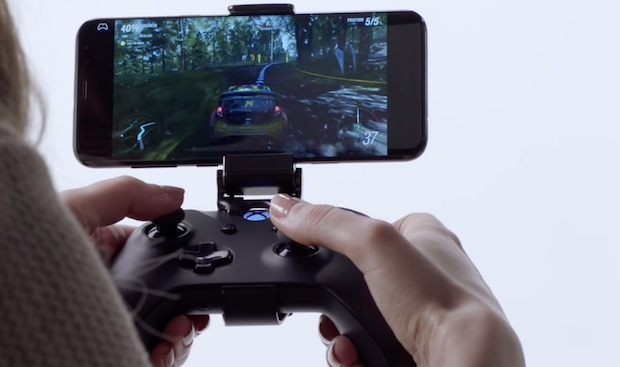
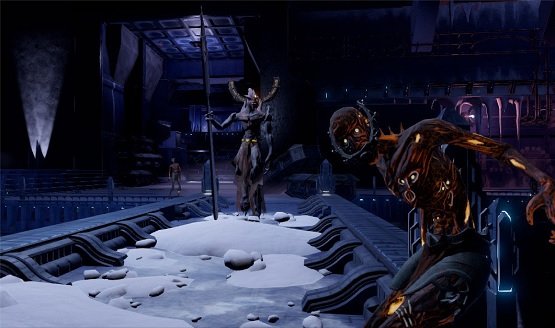

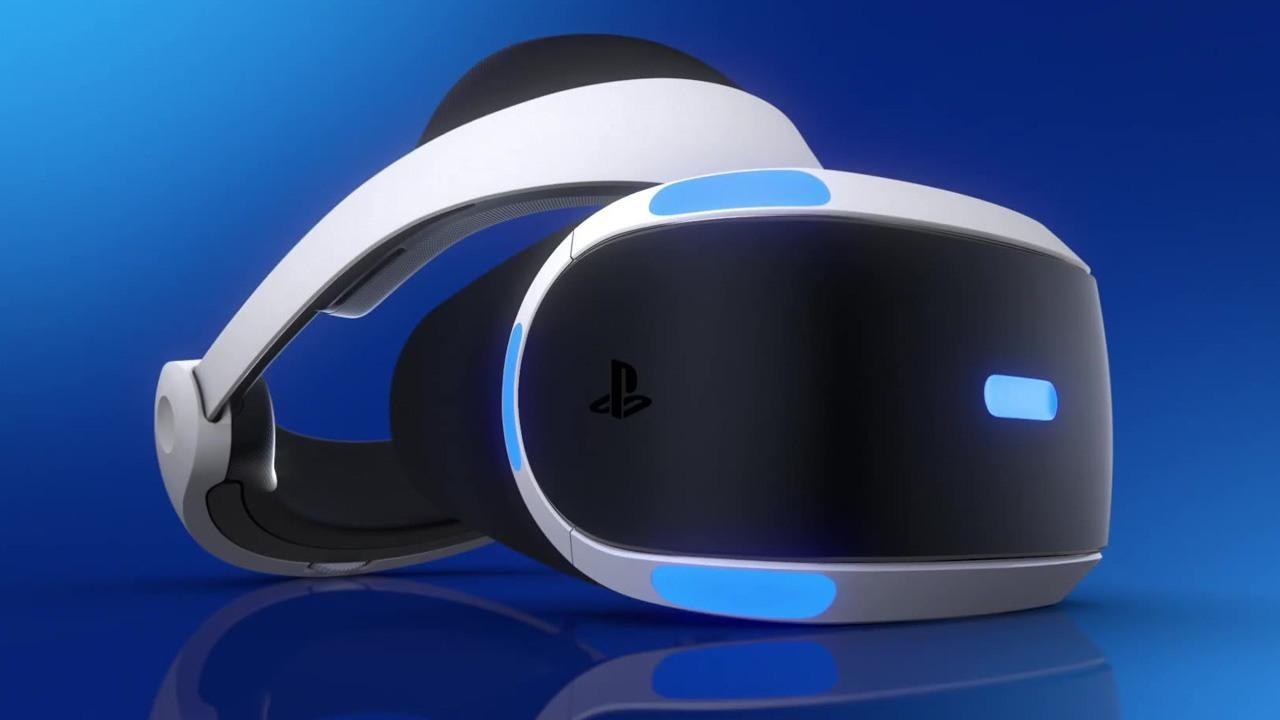
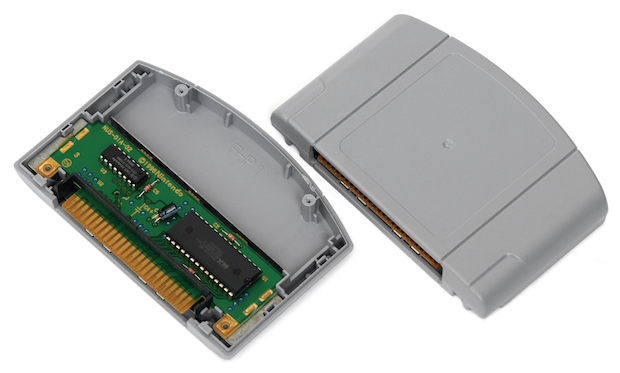
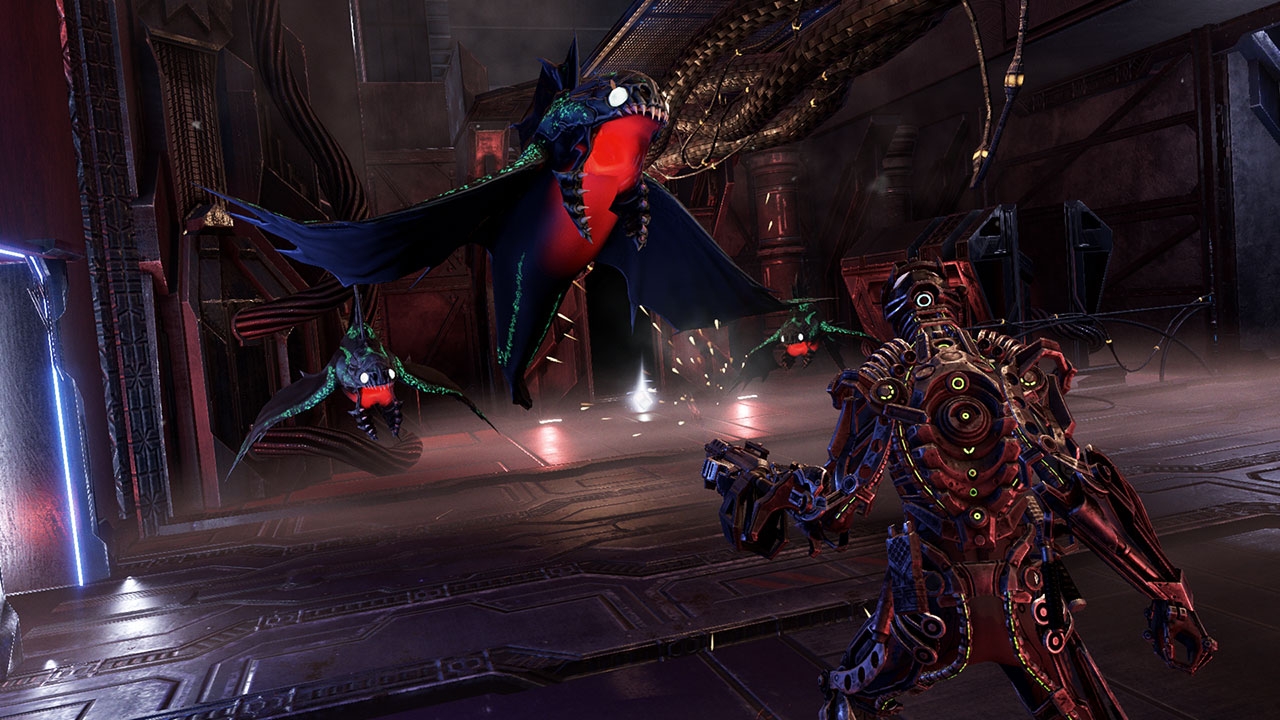
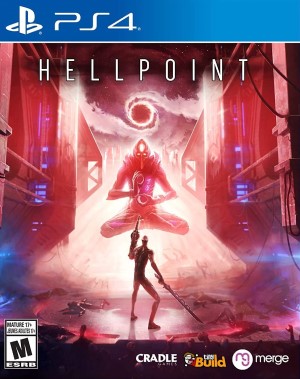







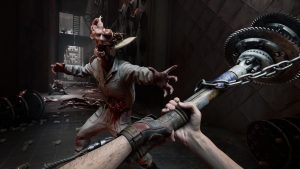
Share Your Thoughts Below (Always follow our comments policy!)